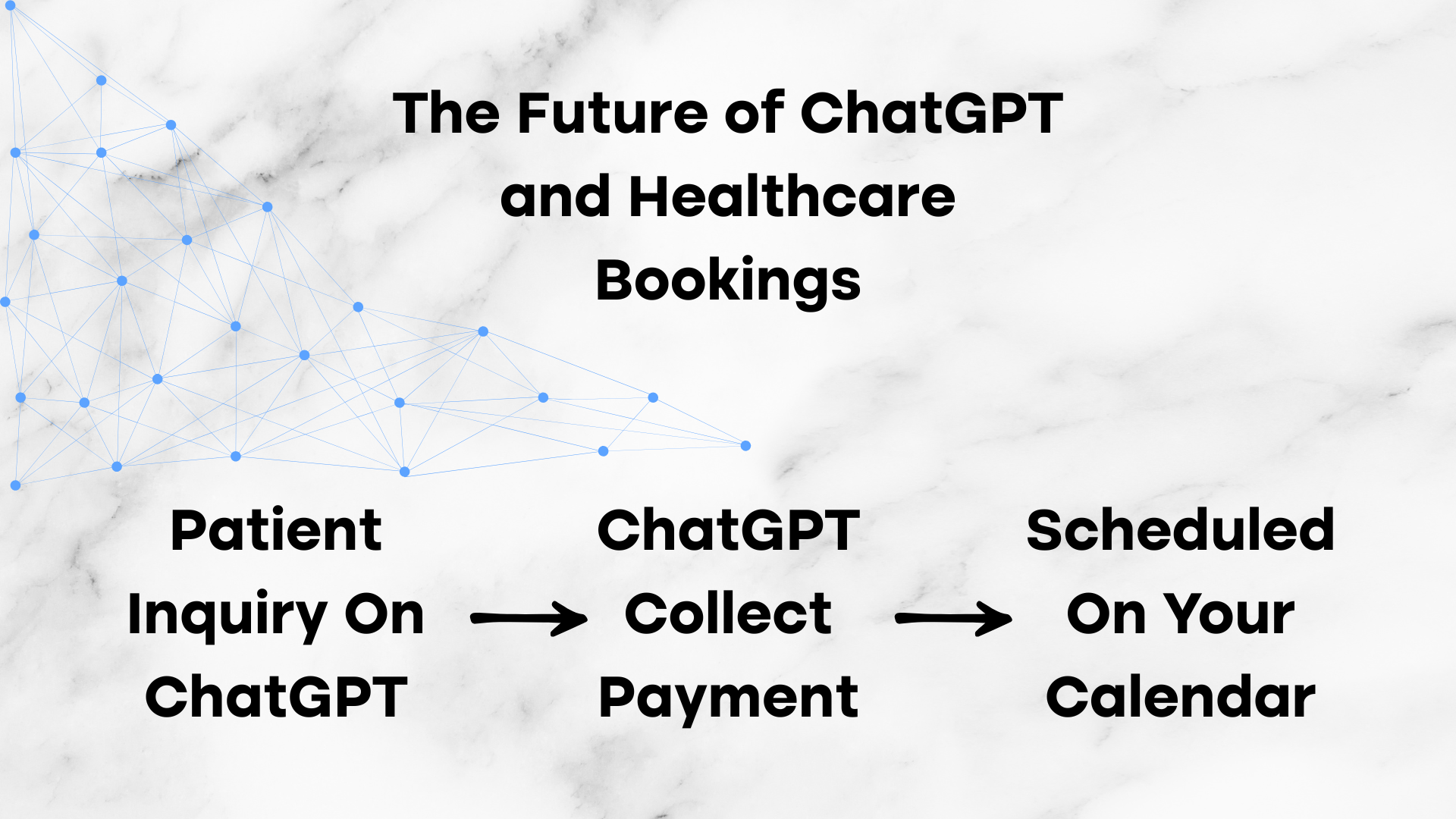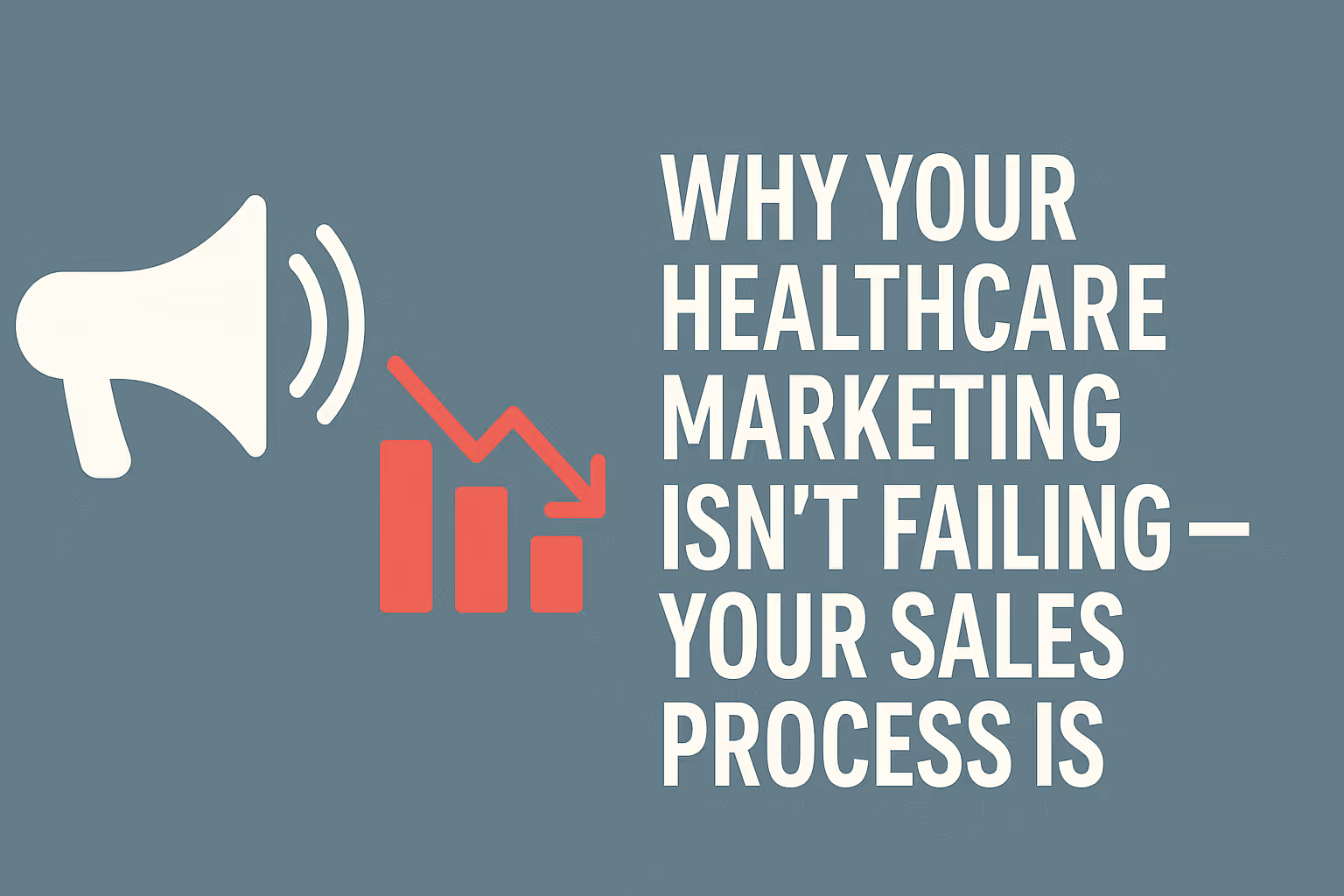Read more Articles
Keep up to date with medspa marketing strategies.

Unlike vague strategies or overused templates, this walkthrough is based on real campaigns that consistently drive patients into clinics. It combines budget planning, offer crafting, landing page strategy, keyword research, and CRM integration into one easy-to-read guide. Our guide will outline the essential steps required to create a high-performing PPC campaign for healthcare.
If you find this blog useful, Nexamed offers healthcare ppc services for healthcare businesses all across the United States. If you are interested in learning more how we could help grow your business, contact us.
If you’re reading this expecting to turn $500 of ad spend into $10,000 in booked treatments within a week, it’s time for a reality check. Healthcare marketing, especially B2C services like medspas, elective surgery, or specialty clinics, is one of the most challenging fields in digital advertising.
Why? Because unlike emergency services or urgent needs, most prospective patients aren’t ready to buy immediately. They’re researching, comparing providers, and building trust long before they commit. In law, someone might call the first attorney they find. In healthcare, the sales cycle is often weeks or even months.
We’ve run internal studies that prove this. For example, in a liposuction campaign, the average time between a lead filling out a form and actually booking their procedure was 120 days—nearly four months of follow-up, phone calls, and nurturing. That lag time isn’t a sign of failure; it’s the reality of the patient decision-making process.
This is why follow-up is not optional in PPC for healthcare—it’s the single most important part of your marketing process. Yet, it’s also the most overlooked. Many clinics focus heavily on generating leads but put little effort into consistent, strategic follow-up that keeps them top-of-mind until the patient is ready to move forward.
It’s also important to align expectations between doctors and their marketing team or agency. Unrealistic goals—like expecting immediate ROI from cold traffic—will only lead to frustration. Healthcare PPC requires both patience and precision: understanding complex targeting, managing high competition for keywords, and optimizing campaigns based on real data, not guesses.
The good news? The payoff can be enormous. If you’re spending $3,000 a month and land even one $20,000 patient, you’ve covered months of advertising spend in a single sale. That’s why healthcare is both highly competitive and extremely lucrative—if you approach it with the right strategy, realistic expectations, and a commitment to the long game.
Before launching any healthcare PPC campaign, it is essential to understand the key metrics that will guide your decisions. These are called Key Performance Indicators (KPIs)—measurable values that show how effectively your campaign is performing.
Ideally, you should set KPIs before launching a campaign so you know what success looks like. However, if you’ve never run a campaign before, I recommend not locking in strict KPI goals for your first attempt. Your first run should be about gathering data—learning what the market charges for clicks, leads, and conversions—so you can set realistic targets moving forward.
Below are the most important KPIs to know in medical PPC:
CPL – Cost Per Lead CPL tells you exactly how much you’re paying for each form submission, phone call, or other lead-generation action. A “lead” refers to having captured a name and a contact method. Many healthcare professionals assume they can get leads for $30 each because that’s what they’ve seen in unrelated industries. The reality is very different: for high-ticket services like cosmetic surgery, expect to pay $90–$250 or more per lead.
CPC – Cost Per Click CPC measures how much you pay each time someone clicks your ad—whether or not they convert. For example, if you’re paying $20 per click, that click needs to be from a highly targeted, high-intent keyword. Ten clicks without a single form fill would still cost you $200. This is why keyword selection and landing page optimization are critical. High CPCs can still be profitable if your conversion rate is strong.
ROAS – Return on Ad Spend ROAS calculates the revenue generated for every dollar spent on ads only. It does not include your agency’s management fees. For example: if you spent $9,000 on ads (plus a $1,000 management fee) and generated $27,000 in revenue, your ROAS is 3x—not 2.7—because the management fee isn’t counted in ad spend.
CPA – Cost Per Acquisition CPA encompasses all costs associated with acquiring a paying patient. For example:
CPA is one of the most important KPIs you can track, as it reveals the true cost of acquiring a customer.
ROI – Return on Investment ROI is calculated by dividing your total revenue by your total costs, including ad spend and management fees. Using the same example above, $27,000 in revenue minus $9,000 in ads and $1,000 in management leaves $17,000 net. That’s a 2.7x ROI. ROI provides the big-picture view of whether your marketing investment is financially worthwhile.
Before anything else, decide how much you're willing to invest. Your budget influences how many people see your ad, the keywords you can bid on, and how quickly you receive data to make informed decisions. For most healthcare-related keywords, a minimum monthly budget of $1,500 is recommended.
Why so much? Because Google Ads is an auction. If you're bidding on competitive terms like “Botox near me” or “orthopedic surgeon Orlando,” low bids will rarely get shown—and when they do, it’s often at odd hours or in less visible or optimal placements. A healthy budget allows you to test more keywords and reach more qualified searchers quickly. This is because you will be able to test and refine your keywords much faster and efficiently than with a low ad spend.
As mentioned earlier, healthcare marketing is also highly competitive. You need a higher ad budget to compete against companies like Hims, BlueChew, and large private equity-backed practices with substantial capital. If your ad budget is under $1,500, you won’t get any placements when one of these companies is paying millions for the same spot.Keep in mind, your first campaign may not be a home run — and that’s completely normal. Marketing is iterative. Every campaign, especially in the early stages, is a learning experience.
As you go through this guide, you might find that certain suggestions don’t apply to your unique practice. If your intuition or experience tells you a different approach is better, follow it. This guide isn’t a one-size-fits-all blueprint — it's a framework to help you make smarter, more informed decisions.
You also want to identify your goals. At the start of every year, I set goals for 1 month, 3 months, 6 months, 1 year, 3 years, and 5 years. This helps me better align my business goals with my actions, ensuring I am on the right track. You should do the same with your PPC campaign.
If you are looking for leads, be sure to clarify that; if you are looking for awareness, mention that; if you are looking for repurchases, mention that. Each of those is a different type of marketing that needs to be identified before starting.
Your offer is what makes people click. It’s the hook. The reason they take action today instead of scrolling past. It is important to make sure that
Generic offers like “15% off” rarely generate excitement. Instead, aim for offers that are easy to understand and feel valuable. Something like:
These offers should be quick to understand, easy to share, and clearly tied to real savings. When building what we call a Patient-Centered Offer, everything should be built around the actual service you’re promoting — not just the price point, but the emotional motivators, objections, and purchase timeline that come with it.
Consider seasonal relevance. January is ideal for weight loss campaigns, while summer is perfect for skin treatments. But timing isn’t just about when people want the service — it’s also about how long it takes to properly prepare your campaign. Plan at least 2–3 months in advance to allow time for creative development, landing page setup, ad approval, and most importantly: lead conversion.
And this is where many practices go wrong — they underestimate how long it actually takes to turn a lead into a paying patient.
Take liposuction as an example. The average time-to-purchase for high-ticket procedures like this is 60–90 days from the moment the lead form is submitted. Why? Because people need time to think. They’re contemplating cost, downtime, outcomes, and emotional readiness. These aren’t impulse buys — they’re major life decisions. Botox, on the other hand, might convert within a week. The contrast in Time to Value (TTV) is critical to understand.
If you don’t fully understand the nature of the service — the buying cycle, average patient hesitations, price sensitivity, seasonality, and how long it typically takes for someone to go from “I’m interested” to “I’m booked” — your marketing won’t align with real-world patient behavior. And when that happens, you end up blaming the ads, when the issue was never the ads in the first place.
Before launching any campaign, ask yourself: Do I truly understand this service, what the patient needs to feel confident in purchasing it, and how long that process usually takes? That’s the foundation of a Patient-Centered Offer — and the difference between wasted budget and meaningful growth.
Before running ads, it’s crucial to understand how your ideal patients search. That starts with keyword research — not just looking up “Botox near me,” but digging into the full spectrum of how people talk about their needs online. Use Google’s Keyword Planner to find search volume, cost-per-click, and competitiveness. You don't always need to go for the obvious, either. Keywords like “tired eyes fix Orlando” or “microneedling for acne scars” often signal higher intent and can be more affordable than broader terms.
Look for long-tail phrases tied to symptoms, goals, or outcomes. Someone searching “best lip filler for a natural look” is far more likely to convert than someone just browsing “aesthetic clinic.” The language your patients use when they’re serious about booking is usually more emotional, specific, and value-driven — and those are the keywords worth building your campaigns around.
Equally important is understanding the Time to Value (TTV) of the service you're advertising. Botox might convert within a week. But something like liposuction? That patient could take 60 to 90 days to progress from the initial click to a booked procedure. If you don’t account for that delay, you’ll misread the data and cut a campaign too early.That’s why your keyword strategy must reflect not just what people are searching for, but also how long the decision-making journey takes. Choose keywords that map to where the patient is in that process — early interest, consideration, or ready to book. Build in negative keywords to avoid irrelevant traffic, and use match types carefully to strike a balance between control and reach. When you combine intent-driven keyword targeting with a realistic understanding of your service’s buying cycle, your ads stop becoming a gamble — and start becoming a growth engine.
If you have someone available, you can actually have your healthcare SEO person help you with this. Keyword research is a crucial SEO skill, as it involves gauging which keywords you want to bid on. Your SEO guy may be able to find some really cheap, easy hits that you could miss with high volume on transactional or commercial pages.
Your landing page is where the ad traffic lands. This is not the place to send them to your main website’s homepage. That’s a fast way to lose interest. Instead, build a standalone landing page—ideally on a subdomain like book.yourclinic.com or a clean separate domain. If you want to buy a new domain, you can use services like GoDaddy, and if you want to create a subdomain, you need to do that through your domain's DNS settings. If you are unsure how to do this, ask your website administrator or find out where your domain is hosted and contact their support for assistance.
If you want a custom built landing page done for you, check out our digital marketing services.
Tools like Framer or Webflow are ideal for this if you want modern, fast-loading designs without needing a developer.
Here’s what a good landing page should do:
Your landing page is arguably the most important part of your campaign. If it doesn’t speak to your audience clearly, you’ll waste ad dollars on people who click but never fill out the form. Google is also very critical of your landing page. Invest in software that has very fast load speeds and is SEO optimized for healthcare marketing using proper heading structure and basic SEO practices.
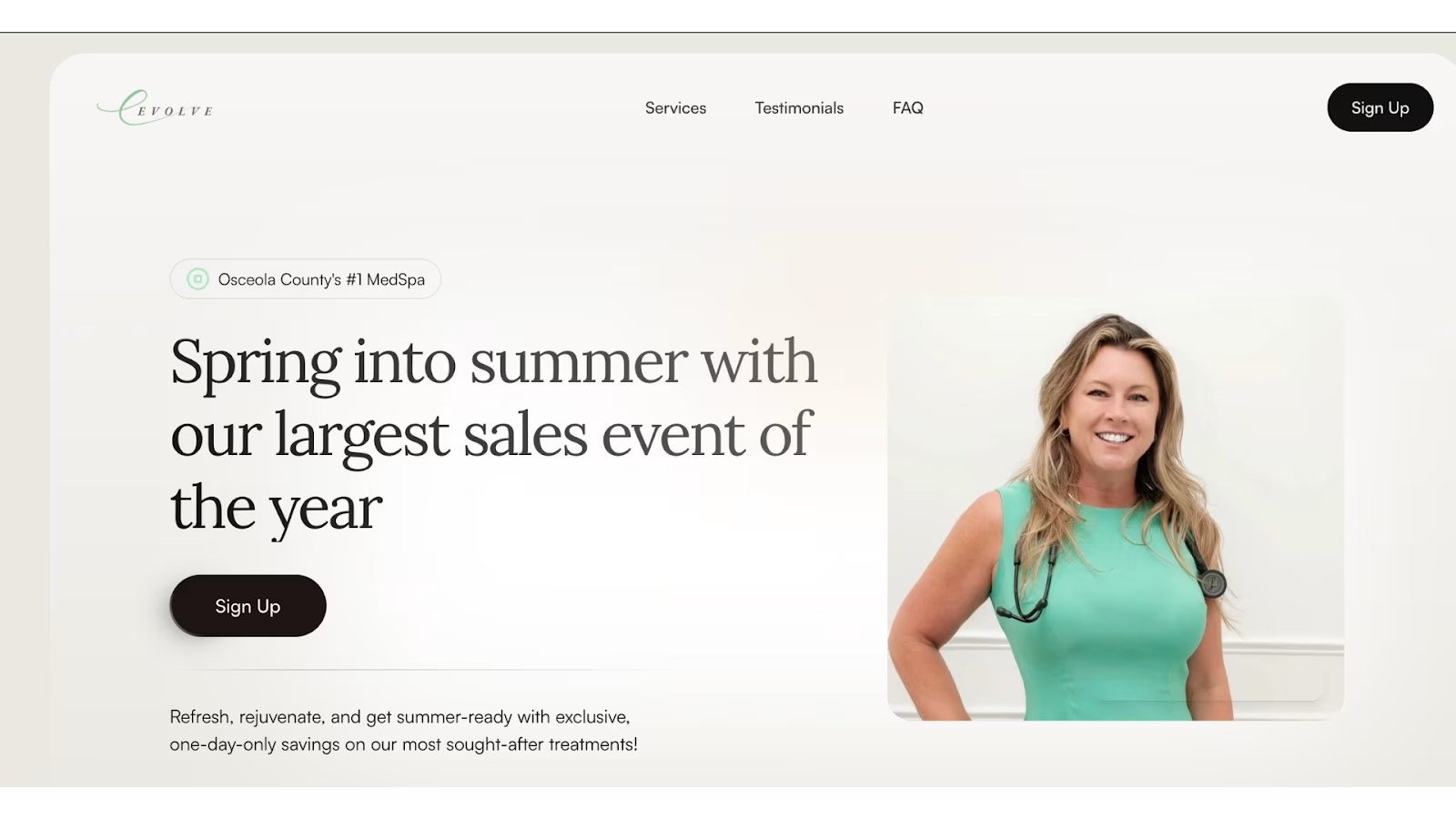
This step is what separates a successful campaign from a wasted one. When someone fills out your form, there should be an automatic system in place that does three things:
You can use tools like GoHighLevel, HubSpot, or even Zapier to connect your form to your CRM and automate follow-ups. The faster you respond, the better the chance that the patient books. You need to have a system that sends them an SMS and an email within three minutes. You want to reach out to them and start the conversation when they are at their peak interest and are actively searching for your services.
As mentioned earlier, depending on your service, you may need to set up these follow-ups for an extended period. This could include 2-3 SMS/Emails per week for 2+ months to get them fully comfortable with you. Ensure that all your emails and SMS messages maintain the same tone and branding. This will reinforce brand trust much faster and decrease the time it takes to convert that lead.
Even if you don’t have a complex CRM yet, you need at least basic automation to avoid losing hot leads while they’re still thinking about you.
If you are looking for custom built healthcare marketing automations, reach out to our team!

With your strategy and structure in place, it’s time to translate your plan into a live campaign inside Google Ads Manager. This is where all the groundwork—your offers, targeting, and keyword research—turns into real traffic and booked appointments.
When setting it up, pay close attention to each of these elements:
Campaign Type:
Start with a Search Campaign that targets people actively searching for your service. This is the fastest route to generating leads because you’re capturing high-intent searches like “Botox near me” or “Pediatric urgent care in [City].” Avoid jumping into Display or YouTube ads until you have reliable search data to work from.
Target Location:
Use the location settings to zero in on your service area. You can target:
Be sure to select “Presence: People in or regularly in your targeted locations” to avoid wasting spend on irrelevant clicks.
Daily Budget:
Break down your monthly budget into daily limits that ensure consistent visibility. For example, if your budget is $1,500/month, set your daily budget around $50. Adjust upward if you’re consistently hitting your daily cap with profitable leads, or scale back if you need to test creatives first.
Keywords:
Import the exact match and phrase match keywords you identified in Step 3. Group them into tightly themed ad groups—for example, one ad group for “lip filler” and another for “Botox.” This allows you to tailor ad copy to each service, which improves Quality Score and lowers your cost-per-click (CPC).
Ad Copy:
Your headlines should directly reflect the offer and use search terms from your keywords. For example:
Use the description lines to emphasize urgency (“Book Before [Date] to Claim Offer”) and include a clear call to action (“Call Now” or “Book Online”).
Landing Page Connection:
Always link your ads to a dedicated landing page, not your homepage. This page should match the ad’s promise, load quickly, and include a visible booking button or phone number above the fold. A mismatch here is one of the fastest ways to waste ad spend.
Ad Extensions:
Add extensions to maximize your real estate in search results:
Once your campaign is live, monitor it daily for the first week to spot trends, pause underperforming keywords, and refine bids. The first 30 days should be treated as a learning period, but with the right setup, you can start seeing booked appointments within days.
A few days after launch, your campaigns will start generating clicks and leads—but this is where the real work begins. The difference between an average campaign and a high-performing one is in the ongoing optimization.
What to Review First:
Optimization Tactics That Work:
Why Tracking Matters More Than Anything:
One of the most common mistakes healthcare businesses make is skipping proper attribution. Without UTM tracking in your ad URLs, you can’t reliably tie a booked patient back to the specific campaign, keyword, or ad they came from. This makes optimization nearly impossible because you’re guessing instead of knowing.
A strong tracking setup should allow you to see not just how many leads each campaign generates, but also how valuable they are—down to the service booked and revenue generated. This is the only way to prioritize spend on what’s truly profitable.
Advanced Optimization:
If your budget allows, consider running multiple campaigns against each other. For example, five campaigns at $500–$1,000 per month each, all targeting different keyword themes or geographic areas. This accelerates your ability to identify the highest-converting combinations.
The End Goal:
Every clinic’s data will look different, so optimization is an ongoing process. The aim is simple: gradually increase lead volume, reduce cost per lead, and maintain (or even improve) lead quality. Done consistently, this approach compounds over time, producing a lean, high-performing ad account that fuels predictable growth.
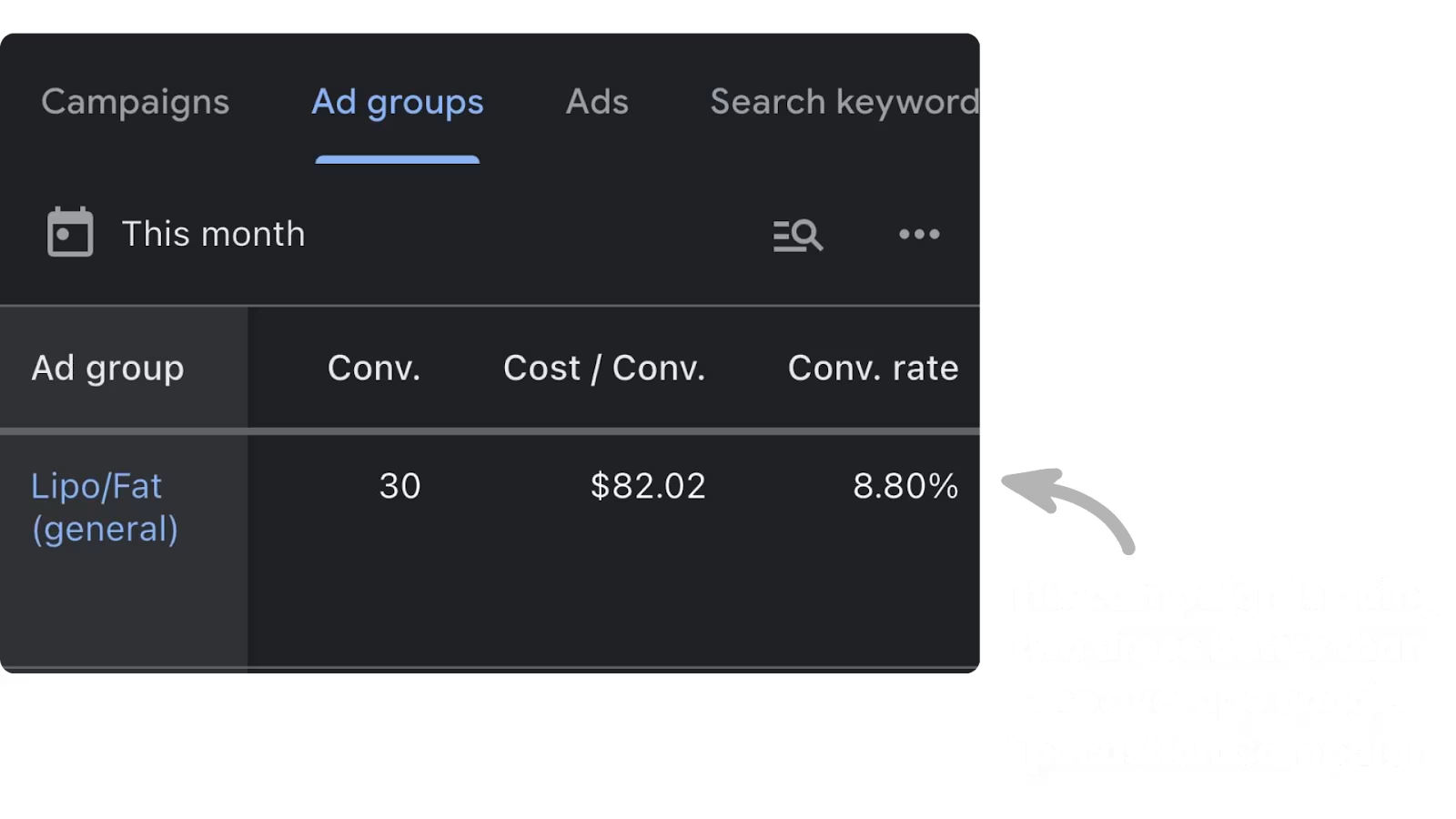
A successful healthcare marketing plan isn’t a collection of random tactics—it’s an interconnected system. Your budget determines how quickly you can gather data. Your offer influences how many people click. Your landing page shapes conversion rates. Your CRM and follow-up processes decide whether those leads actually become paying patients.
At Nexamed, we’ve built, tested, and refined this exact framework for clinics across the country, helping them attract high-quality patients and generate predictable revenue. Whether you need a conversion-focused landing page, automated follow-up systems, or hands-on campaign management, we’ve done it successfully dozens of times.
If you decide to go it alone, use this guide as your foundation. But if you want to move faster and skip the trial-and-error phase, Nexamed is a very skilled healthcare ppc agency and we can help you execute it the right way—starting from day one.
If your interested in learning more about healthcare marketing check out my blog on the Top 5 Most Important Medspa Marketing Tips and How To Lower Your CPA With Fast Answering.
We build predictable patient acquisition systems that deliver real, trackable ROI for medspas.
Keep up to date with medspa marketing strategies.
